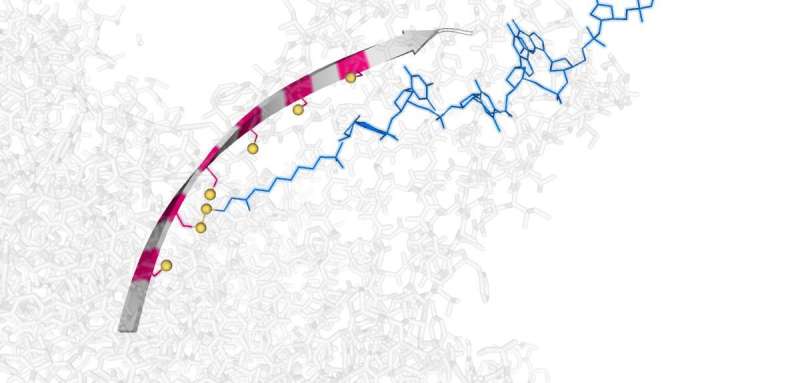'Molecular hopper' small enough to move single DNA strands

Researchers from the University of Oxford have constructed a "molecular hopper," capable of moving single strands of DNA through a protein nanotube.
The tiny hopper works by making and breaking in sequence simple chemical bonds that attach it to a nanoscale track. This can be turned on, off or reversed by a small electrical potential, which ultimately might make it suitable for use in nanopore DNA sequencing devices.
Professor Hagan Bayley of Oxford University's Department of Chemistry, who led the research, said: "Being able to control molecular motion is the holy grail of building nanoscale machines. Being able to process single molecules of DNA under precise chemical control may provide an alternative to the use of enzymes in DNA sequencing technologies, improving their speed and the number of molecules that can be analysed in parallel."
The 2016 Nobel Prize was awarded in part for the construction of molecules with sliding and rotating elements, demonstrating the importance of this technology to many fields. The Oxford team have significantly progressed this technology by producing molecules that make sub-nanometer hopping steps that can be detected one at a time and are subject to external control.
The hopper currently takes a few seconds for each step, and the researchers now seek to increase the speed of the chemistry as well as the length of the track, which is presently limited to six footholds.
How the hopper works
The hopping motion uses very simple chemistry based on 3 sulfur atoms [thiol/ disulfide interchange], which occurs in water at room temperature. The hopper takes sub-nanometer steps (0.7 nm), and is powered and controlled by an electric field; the direction of hopping can be switched by reversing the electric field. All this is monitored in real-time at the single molecule level.
A ratcheting motion is required for nanopore sequencing, which at present is achieved by using an enzyme. The hopping motion in the newly published device is a chemical ratchet and this principle might be applied to DNA and RNA sequencing because the step-size is similar to the inter-nucleotide distance in single-stranded DNA.
The full paper, "Directional control of a processive molecular hopper," is published in the journal Science.
More information: Yujia Qing et al. Directional control of a processive molecular hopper, Science (2018). DOI: 10.1126/science.aat3872
Journal information: Science
Provided by University of Oxford


















